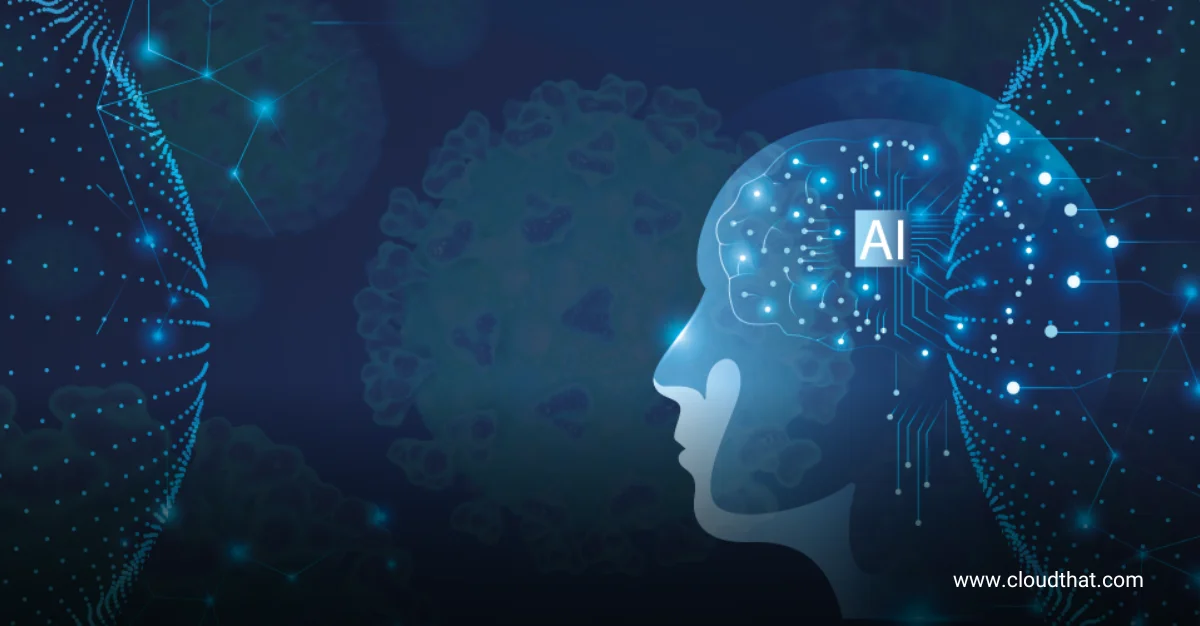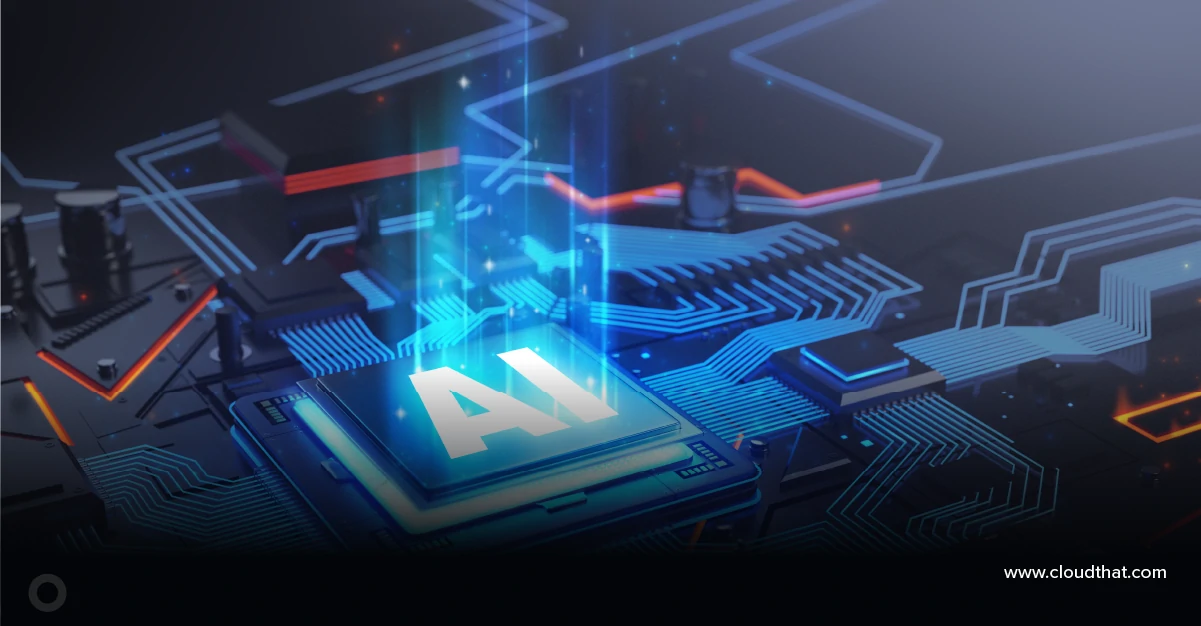|
Voiced by Amazon Polly |
Introduction
Graph machine learning (ML) has emerged as a powerful approach to unlocking valuable insights from interconnected data in enterprise-scale applications. However, working with large-scale graph data poses several challenges that can hinder efficient analysis and utilization. As enterprises increasingly rely on graph data to drive decision-making, optimize processes, and uncover hidden patterns, addressing the complexities of large-scale graph ML becomes paramount.
AWS GraphStorm offers comprehensive features and capabilities specifically designed to tackle the unique challenges associated with working with massive and dynamic graphs.
Pioneers in Cloud Consulting & Migration Services
- Reduced infrastructural costs
- Accelerated application deployment
Growing Significance of Graph Machine Learning (ML) in enterprise-scale Applications
The growing significance of graph machine learning (ML) in enterprise-scale applications can be attributed to several factors. Here’s an explanation of why graph ML is becoming increasingly important in the enterprise space:
- Representation of Complex Relationships: Enterprise data is often rich in complex relationships and interconnectedness. Graph ML provides a powerful framework for analyzing and modeling these relationships, capturing the dependencies and interactions between entities. By representing data as graphs, enterprises can gain deeper insights into the intricate connections within their data, enabling them to make more informed decisions.
- Uncovering Hidden Patterns and Insights: Graph ML techniques excel at uncovering hidden patterns, anomalies, and insights within large-scale datasets. They can reveal hidden relationships, identify influential entities, and detect emerging trends or communities. This capability is particularly valuable in domains such as social networks, fraud detection, recommendation systems, supply chain optimization, and cybersecurity, where understanding complex interactions is crucial for business success.
- Enhanced Data Integration and Fusion: Enterprises often deal with disparate data sources and formats, making data integration a significant challenge. Graph ML facilitates data fusion by providing a unified representation that integrates diverse data types, such as structured, unstructured, and semi-structured data. By leveraging graph-based data models, enterprises can combine and analyze data from various sources, leading to a more holistic view of their operations.
- Improved Decision-Making and Predictive Analytics: Graph ML enables enterprises to leverage predictive analytics to make data-driven decisions. Graph ML models can predict outcomes, anticipate customer behavior, optimize processes, and support strategic planning by analyzing the relationships and dependencies within the data. This predictive power empowers enterprises to proactively address challenges, optimize operations, and uncover new growth opportunities.
Overcoming Large-Scale Graph Data Challenges with AWS GraphStorm
When working with large-scale graph data, several challenges can impede efficient analysis and utilization of the data. Some of the key challenges include:
- Scalability: Large-scale graphs can contain millions or even billions of nodes and edges, making it difficult to handle the computational and storage requirements. Processing and analyzing such massive graphs require scalable solutions that can handle the volume of data and perform operations efficiently.
- Data Ingestion and Preprocessing: Ingesting and preprocessing large-scale graph data can be complex and time-consuming. Cleaning, transforming, and organizing the data in a format suitable for analysis can pose challenges, especially when dealing with diverse data sources and formats.
- Storage and Memory Management: Storing and managing large-scale graph data efficiently can be demanding. Graph data often requires specialized data storage solutions that can handle the volume, optimize memory usage, and support fast data retrieval for analysis and processing.
- Computational Complexity: Performing graph-based computations and algorithms on large-scale graphs can be computationally intensive. Algorithms such as graph traversal, centrality analysis, and community detection may require significant computational resources and time, posing challenges in achieving real-time or near-real-time processing.
Features of AWS GraphStorm
- Simplified Graph Data Ingestion: AWS GraphStorm provides connectors and tools that simplify the ingesting and preparing of graph data for ML tasks. It allows you to import data from various sources efficiently, transform it into a format suitable for ML models, and handle large-scale graph datasets.
- Pre-built Graph ML Algorithms: AWS GraphStorm offers a rich library of pre-built graph ML algorithms, including popular techniques like graph convolutional networks (GCNs), graph attention networks (GATs), and graph neural networks (GNNs). These algorithms enable developers to leverage state-of-the-art techniques without starting from scratch, saving time and effort.
- Distributed Training: To tackle the computational intensity of training ML models on large-scale graphs, AWS GraphStorm supports distributed training across multiple compute It leverages the scalability of AWS infrastructure and parallel processing capabilities to accelerate training times and improve scalability.
- Integration with AWS Services: AWS GraphStorm integrates with other AWS services, such as Amazon S3 for data storage, Amazon EMR for distributed processing, and Amazon SageMaker for model deployment. This integration allows you to leverage the full capabilities of the AWS ecosystem, enabling a comprehensive and cohesive ML pipeline.
- Streamlined Model Deployment: Once ML models are trained, AWS GraphStorm provides streamlined deployment capabilities. It integrates with Amazon SageMaker for packaging and deploying trained models at scale. Additionally, you can use custom deployment options based on your specific requirements.
- Scalability and Elastic Resource Management: AWS GraphStorm allows you to scale compute resources based on the workload, enabling efficient resource utilization and reducing training times. It automatically manages the allocation and deallocation of resources, providing elasticity to handle varying workloads effectively.
- Monitoring and Management: AWS GraphStorm provides tools and interfaces to monitor the performance of deployed graph ML models. You can track inference results, manage model updates, and schedule retraining to ensure that your models stay up-to-date and continue to deliver accurate insights.
- Data Privacy and Security: AWS GraphStorm prioritizes data privacy and security. It leverages the security mechanisms and compliance standards provided by AWS to ensure the confidentiality and integrity of graph data. This allows you to deploy graph ML solutions while adhering to your organization’s security and privacy requirements.
Conclusion
With AWS GraphStorm, organizations can confidently embark on their graph ML journey, driving innovation and data-driven decision-making at an enterprise scale.
Drop a query if you have any questions regarding AWS GraphStorm and I will get back to you quickly.
Making IT Networks Enterprise-ready – Cloud Management Services
- Accelerated cloud migration
- End-to-end view of the cloud environment
About CloudThat
CloudThat is an award-winning company and the first in India to offer cloud training and consulting services worldwide. As a Microsoft Solutions Partner, AWS Advanced Tier Training Partner, and Google Cloud Platform Partner, CloudThat has empowered over 850,000 professionals through 600+ cloud certifications winning global recognition for its training excellence including 20 MCT Trainers in Microsoft’s Global Top 100 and an impressive 12 awards in the last 8 years. CloudThat specializes in Cloud Migration, Data Platforms, DevOps, IoT, and cutting-edge technologies like Gen AI & AI/ML. It has delivered over 500 consulting projects for 250+ organizations in 30+ countries as it continues to empower professionals and enterprises to thrive in the digital-first world.
FAQs
1. What types of graphs does AWS GraphStorm support?
ANS: – AWS GraphStorm supports various types of graphs, including directed and undirected, weighted, and dynamic graphs that evolve over time. It is designed to handle enterprise-scale graphs with massive sizes and complex structures.
2. Is AWS GraphStorm suitable for large-scale graph data?
ANS: – Yes, AWS GraphStorm is specifically designed for large-scale graph data. It leverages AWS infrastructure’s scalability and parallel processing capabilities to handle the complexities of massive graphs, ensuring efficient training and inference.
3. Is AWS GraphStorm secure?
ANS: – Yes, AWS GraphStorm prioritizes data privacy and security. It leverages AWS security mechanisms and compliance standards to ensure the confidentiality and integrity of graph data. You can confidently deploy graph ML solutions while adhering to your organization’s security and privacy requirements.

WRITTEN BY Ramyashree V
Ramyashree V is working as a Research Associate in CloudThat. She is an expert in Kubernetes and works on many containerization-based solutions for clients. She is interested in learning new technologies in Cloud services.


 Login
Login


 July 21, 2023
July 21, 2023 PREV
PREV










Comments